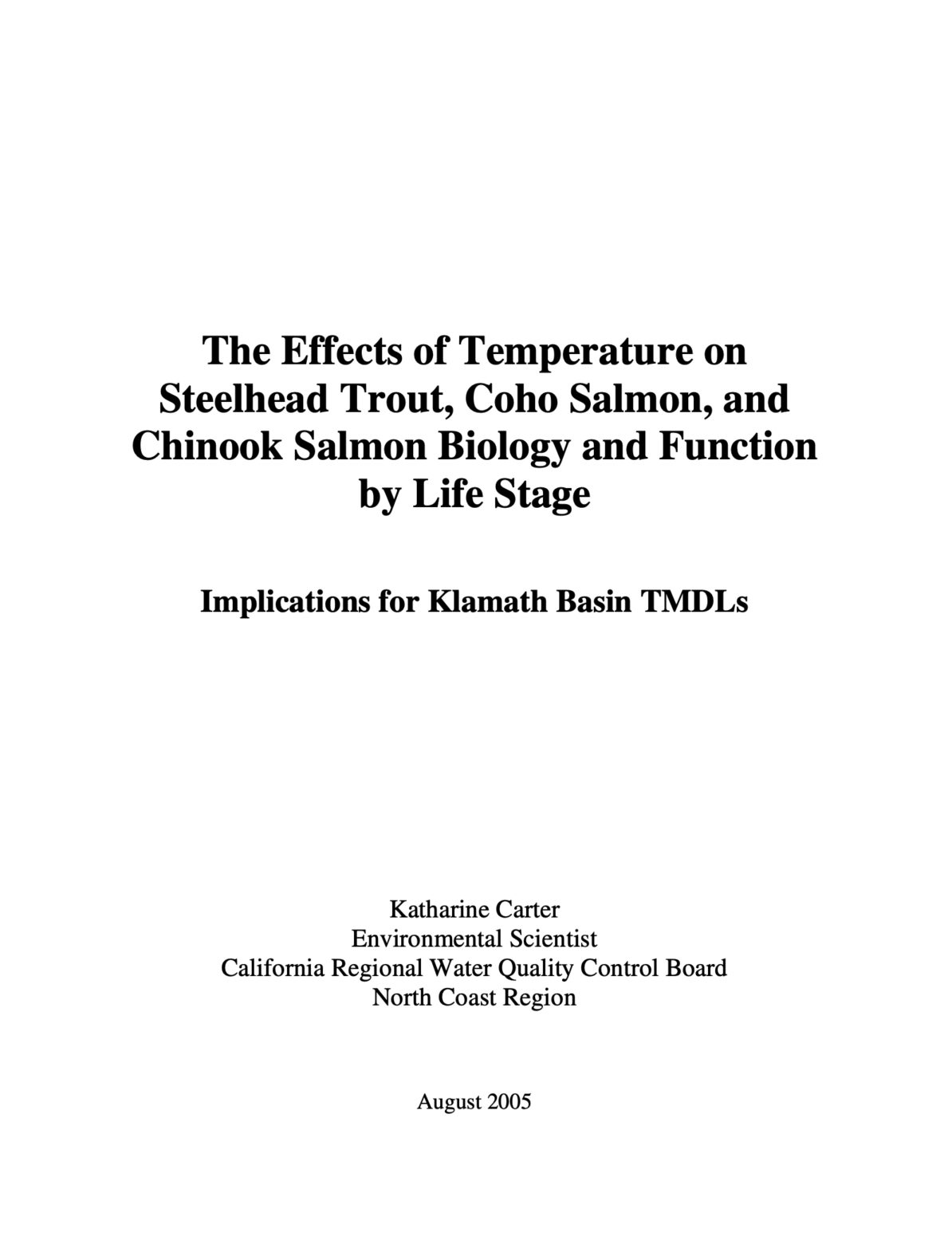
Temperature is one of the most important environmental influences on salmonid biology. Most aquatic organisms, including salmon and steelhead, are poikilotherms, meaning their temperature and metabolism is determined by the ambient temperature of water. Temperature therefore influences growth and feeding rates, metabolism, development of embryos and alevins, timing of life history events such as upstream migration, spawning, freshwater rearing, and seaward migration, and the availability of food. Temperature changes can also cause stress and lethality (Ligon et al. 1999). Temperatures at sub-lethal levels can effectively block migration, lead to reduced growth, stress fish, affect reproduction, inhibit smoltification, create disease problems, and alter competitive dominance (Elliott 1981, USEPA 1999). Further, the stressful impacts of water temperatures on salmonids are cumulative and positively correlated to the duration and severity of exposure. The longer the salmonid is exposed to thermal stress, the less chance it has for long-term survival (Ligon et al. 1999).
